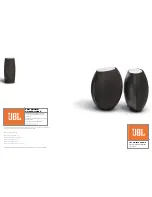
10
4) Cables
Frequently inspect cables for wear, cracks and damage. IMMEDIATELY
REPLACE those with excessively worn or damaged insulation to avoid
possibly lethal shock from bared cable. Cables with damaged areas may
be taped to give resistance equivalent to original cable. Keep cable dry,
free of oil and grease, and protected from hot metal and sparks.
5) Terminals and other exposed parts
Terminals and other exposed parts of electrical units should have insulating
covers secured before operation.
6) Electrode
a) Equipment with output on/off control (contactor)
Welding power sources for use with the gas metal arc welding, gas
tungsten arc welding and similar processes normally are equipped with
devices that permit on/off control of the welding power output. When
so equipped the electrode wire becomes electrically LIVE when the
power source switch is ON and welding gun switch is closed. Never
touch the electrode wire or any conducting object in contact with
the electrode circuit unless the welding power source is off.
b) Equipment without output on/off control (no contactor)
Welding power sources used with shielded metal arc welding and similar
processes may not be equipped with welding power output on/off
control devices. With such equipment the electrode is electrically LIVE
when the power switch is turned ON. Never touch the electrode unless
the welding power source is off.
7) Safety devices
Safety devices such as interlocks and circuit breakers should not be
disconnected or shunted out. Before installation, inspection, or service of
equipment, shut OFF all power and remove line fuses (or lock or red-tag
switches) to prevent accidental turning ON of power. Do not open power
circuit or change polarity while welding. If, in an emergency, it must be
disconnected, guard against shock burns, or flash from switch arcing.
Always shut OFF and disconnect all power to equipment. Power disconnect
switch must be available near the welding power source.
PREPARATION OF THE WORKING AREA
The working area must be sufficiently spacious, not humid, and well-ventilated as
to avoid any fumes which develop from the welding process and from incidental
material adhering to the pieces to be welded (oils, paints, tars...) which may cause
annoyance to the operator.
Avoid welding by contact with humid parts nearby combustible liquids. Least of
all, do not weld upon tanks which may contain flammable residuals.
Summary of Contents for weld MIG 100EN
Page 29: ...WIRING DIAGRAMS MIG 90EN 29...
Page 30: ...WIRING DIAGRAMS MIG 100EN 105EN 30...
Page 31: ...WIRING DIAGRAMS MIG 151EN 31...
Page 32: ...PARTS DIAGRAM MIG 90EN 32...
Page 34: ...PARTS DIAGRAM MIG 100EN 105EN 34...
Page 36: ...PARTS DIAGRAM MIG 151TE 36...
Page 40: ......











































